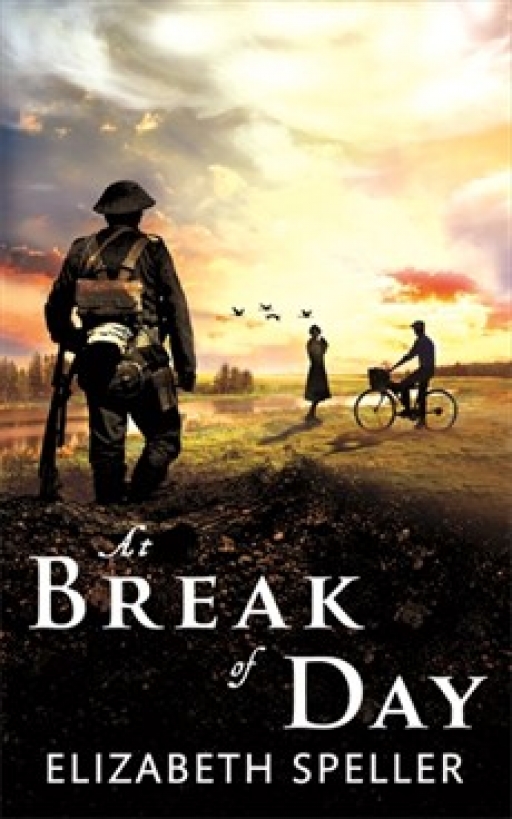Publisher’s Description
“In the summer of 1913, the world seems full of possibility for four very different young men.
Young Jean-Baptiste dreams of the day he’ll leave his Picardy home and row down-river to the sea.
Earnest and hard-working Frank has come to London to take up an apprenticeship in Regent Street. His ambitions are self-improvement, a wife and, above all, a bicycle.
Organ scholar Benedict is anxious yet enthralled by the sensations of his synaesthesia. He is uncertain both about God and the nature of his friendship with the brilliant and mercurial Theo.
Harry has turned his back on his wealthy English family, has a thriving business in New York and a beautiful American wife. But his nationality is still British.
Three years later, on the first of July 1916, their lives have been taken in entirely unexpected directions. Now in uniform they are waiting for dawn on the battlefield of the Somme. The generals tell them that victory will soon be theirs but the men are accompanied by regrets, fears and secrets as they move towards the line”.
Centenary News Review
Reviewed by: Eleanor Baggley, Centenary News Books Editor
At Break of Day is Elizabeth Speller’s third novel that centres on the First World War. In this novel, the focus is on the Battle of the Somme as experienced by four very different young soldiers. The novel is a brilliant example of how a story with multiple narrative strands can reveal many different experiences, each one just as expertly formed and rendered as the next.
This novel is split into four main narratives – one for each of the key characters. Novels with multiple narratives can occasionally become confused and the separate voices merge together, but not here. Speller weaves the different voices with a clarity that makes each character entirely three-dimensional. From the very beginning we know about their passions, their hopes and their secrets. There’s Frank Stanton who wants nothing more than to own his own bicycle and to marry (in that order); then there’s Benedict Chatto, an organist with synaesthesia and a fierce love for his friend; there’s Jean-Baptiste Mallet, a Frenchman who lives for the river and the sea; and finally, there’s Harry Sydenham, an ex-pat living in America, folding under the weight of a lie he once told. These characters are unforgettable and their voices reach out from the page. To put it in the most basic of ways – even without having the name of the character as the chapter heading, you could still identify them from their narrative voice.
What I found to be the most affecting element of At Break of Day is the way the narratives overlap and intersect on the first day of the Somme, 1st July 1916. All of these men come in contact with at least one other on this day. Frank for example, whose narrative is for me the most engaging, crops up in all three narratives as well as his own. The narratives overlap as each character appears in another’s story. They don’t appear as they are but as cameos and small walk on parts so the reader is recognising the familiar faces and situations without the stories merging into one. This technique allows Speller to continue telling each character’s story even when we are not strictly in their narrative. It goes some way to quell the panic some readers (I’m including myself in this) may feel when we leave behind one character at a crucial point in their soldiering life.
At Break of Day is historical fiction at its best. Speller uses her research to enrich the story rather than letting the research becoming the story. The battle itself is described with a light touch and Speller focuses on the individual rather than trying to attempt to summarise the action of the battle or the emotional significance on a grand scale. Neither does Speller look at the Somme in retrospect – we experience the lead up to the first day and the day itself at the same time as the characters and with the same sense of foreboding and eventual disaster. It is by keeping the individual experiences as the focal point that Speller is able to avoid this backwards writing of history. Harry’s Somme is different to Jean-Baptiste’s Somme, just as Benedict’s Somme is different to Frank’s (again, it is Frank’s story that is most memorable for me).
At Break of Day is a novel that will no doubt be compared to Sebastian Faulks’s Birdsong in its scope, strong characterisation and emotionally wrought storytelling. This is no bad thing, but it is important to recognise the vast differences between the two. At Break of Day is a Somme narrative with exceptional heart. It’s beautifully written, deftly characterised and, I think, captures the energy of military and civilian life. I predict that in 2016 we will get a flurry of Somme narratives, and this one deserves to be up there with the best of them.
What do you think about this book? Please add a comment below.
